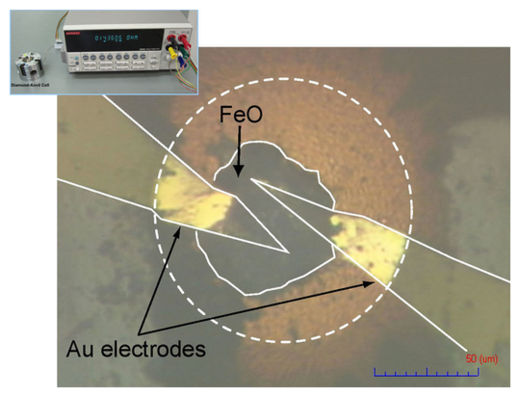
When it comes to Earth's rotation, you might think geophysicists have pretty much everything figured out. Not quite. In order to explain some variations in the way our planet spins, Earth's mantle - the layer of hot, softened rock that lies between the crust and core - must conduct electricity, an ability that the mantle as we know it shouldn't have. Now, a new study finds that iron monoxide, which makes up 9% of the mantle, actually does conduct electricity just like a metal, but only at temperatures and pressures found far beneath the surface.
Earth's spin isn't flawless. Geophysicists have discovered that the time it takes our planet to complete one rotation - the length of a day - fluctuates slightly over the course of months or years. They've also noticed extra swing in the predictable wobble of Earth's axis of rotation, like the swaying of a spinning top. The variations are probably caused by the solid iron inner core, liquid metal outer core, and rocky mantle rotating at slightly different rates. Friction helps bring them into line, and the magnetic field of the outer core can pull on the metal inner core. But to really fit the observations, the core should also exert its magnetic tug on the mantle, says Bruce Buffett, an earth scientist at the University of California, Berkeley, who was not involved in the new study. This means that a layer of the mantle must be able to conduct electricity. But, he says, "the origin of the metallic layer remains an open question."
The main components of the mantle rock, iron monoxide included, don't conduct electricity at temperatures and pressures we're used to here at the surface. But research in the 1980s suggested things might be different deep down: An electrical current passed through the material more easily when it was exposed to a shock wave. The pressure of the shock wave compressed the arrangement of iron and oxygen in the iron monoxide, allowing the electrons to travel more freely from atom to atom.











Comment: Is this a small media campaign to begin bastardizing China? It's very subtle, but it seems to be geared toward slowly making China who (like Russia) is an ally of Iran, to appear to be a loose cannon. What is it about the European version of the "Space Code of Conduct" that has caused the U.S. to have shunned it?
Though vaguely, it can be seen that the War on Terror and security by way of fearmongering, is high on the agenda for steering the minds of the masses.